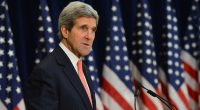By Chih-Jung Huang (黃致榮) | FAPA Policy Fellow
U.S. President Joe Biden is scheduled to hold talks with China’s paramount leader Xi Jinping on the sidelines of the G20 Summit in Indonesia on November 14, 2022 — their first in-person meeting since Biden took office in January 2021. We at the Formosan Association for Public Affairs (FAPA) call on the Biden administration to reassess the One China Policy, which has provided China with a distorted justification for its claims on Taiwan.
On September 18, 2022, President Biden pledged that the U.S. forces would defend Taiwan if China invaded. The comments marked the clearest statement and the fourth time since his taking of office that Biden vowed that the U.S. would defend Taiwan militarily, effectively ending so-called U.S. “strategic ambiguity” on Taiwan’s defense.
When asked about what Xi should know about the U.S. commitment to Taiwan, Biden said that “[we] agree with what we signed onto a long time ago [with the People’s Republic of China (PRC)]” and that “there’s One China Policy.”
We believe that when dealing with Taiwan, the U.S. should focus more on the 1979 Taiwan Relations Act (TRA) and the 1982 Six Assurances rather than the U.S.-PRC Three Joint Communiques — the basis of the U.S. One China Policy.
The U.S. “One China Policy” — which, though merely “acknowledges” China’s position over Taiwan — is not only misleading but also dangerous. It misleads the general public and international community into thinking that the U.S. “recognizes” the Chinese claim of sovereignty over Taiwan. It also emboldens China to invade and annex Taiwan by force.
As China continues to increase its military aggression and hasten an invasion of Taiwan, it is now time for Biden and his administration to publicly revitalize the U.S.’s longstanding position on Taiwan’s undetermined status, and make clear to Xi, the PRC, and the world that Taiwan is not part of China and use collective deterrence to prevent China’s invasion of Taiwan.
U.S. Longstanding Position on Taiwan’s “Undetermined” Status
Since the Japanese surrender to the Allied Powers in 1945, the United States has long maintained the position that China has never acquired sovereignty over Taiwan and that Taiwan’s international status remains “unsettled” or “undetermined.” Statements from various U.S. officials in the early post-war period attest to this point.
On November 21, 1946, the U.S. Department of State informed the Republic of China’s Embassy in the U.S. that “from the legal standpoint the transfer of Taiwan’s sovereignty remains to be formalized.” On April 15, 1949, Michael J. McDermott, Special Assistant to the Secretary of State for Press Relations, also stated that “[Taiwan’s] final status will be determined by the peace treaty if and when we get one” with Japan.
As Secretary of State John Foster Dulles explained on December 1, 1954, “technical sovereignty over Formosa and the Pescadores [i.e., Penghu islands] has never been settled. That is because the Japanese Peace Treaty merely involves a renunciation by Japan of its right and title to these islands. But the future title is not determined by the Japanese Peace Treaty nor is it determined by the Peace Treaty which was concluded between the Republic of China and Japan.”
Prior to 1970, the U.S. State Department repeatedly testified to Congress that the legal status of Taiwan remained “unsettled.” The State Department also wrote to the Senate during hearings in 1969 and 1970 that: “In neither [the San Francisco Peace Treaty of 1951 nor the Taipei Peace Treaty of 1952] did Japan cede this area [of Taiwan and the Pescadores] to any particular entity. As Taiwan and the Pescadores are not covered by any existing international disposition, sovereignty over the area is an unsettled question subject to future international resolution.”
Problems With the One China Policy
While the U.S. has never accepted China’s claim over Taiwan, its One China Policy is confusing and has led to dangerous misinterpretations. Its origins lie in a series of communications between the U.S. and China prior to their normalization of relations.
In the 1972 Shanghai Communique, the United States declared that it “acknowledges” — rather than “recognizes” — that “all Chinese on either side of the Taiwan Strait” maintain there is but one China and that Taiwan is a part of China, and also that the U.S. Government “does not challenge that position.”
When negotiating the Chinese translation of the U.S. policy statements in the Shanghai Communique, the Nixon administration insisted to the Chinese that the verb “acknowledge” be translated as “renshidao” (takes note of) instead of “chengren” (recognize) to make clear that the U.S. itself did not accept the Chinese position and territorial claim over Taiwan.
In the 1979 Normalization Communique, the U.S. again only “acknowledges” the Chinese position that there is but one China and Taiwan is part of China. And in the August 17, 1982 Communique, the U.S. just stated that it had already “acknowledged” the Chinese position of one China and Taiwan is part of China.
Although the U.S. did not “recognize” or “accept” the PRC’s territorial claim over Taiwan in the three U.S.-PRC Joint Communiques, the communiques’ statements gave the PRC an unnecessary opportunity to distort the U.S. position by equating a position of acknowledgment with one of recognition.
As such, the U.S. should abolish the One China Policy, as it provides the PRC with a legal “justification” to invade and annex Taiwan. Through a distortion of this confusing policy, the PRC has accused the U.S. of violating China’s territorial integrity and its sovereignty over Taiwan. Indeed, they often point to the joint communiques as evidence that the U.S. has “recognized” its claims over Taiwan.
Instead, the U.S. should rely on the Taiwan Relations Act and Six Assurances to define its relationship with Taiwan. The TRA has guided U.S. policy toward Taiwan in the absence of a diplomatic relationship since 1979. In passing the TRA, Congress mandated that Taiwan be treated like an independent sovereign country for the purposes of U.S. law: “Whenever the laws of the United States refer or relate to foreign countries, nations, states, governments, or similar entities, such terms shall include and such laws shall apply with such respect to Taiwan.” When emphasizing the One China Policy, however, this reality is often neglected.
The 1982 Six Assurances, too, has been adhered to by all subsequent U.S. administrations, assuring that the U.S. “[has] not altered its position regarding sovereignty over Taiwan.” Since 2016, Congress has passed several pieces of legislation reaffirming that the Six Assurances, together with the TRA, form the “cornerstone” of U.S. relations with Taiwan. Both the Trump and Biden administrations have explicitly recognized the Six Assurances as a cornerstone of U.S. policy toward Taiwan. Going forward, the U.S. should emphasize the TRA and Six Assurances, which are formal documents, rather than the One China Policy, which has provided the PRC with a pretext for annexing Taiwan.
The Biden Administration Should Challenge China’s Claim over Taiwan
The world has undergone dramatic changes since the 1970s, and the One China Policy no longer reflects current realities. Taiwan is now a vibrant democratic country, while China has become openly aggressive and belligerent. Polls consistently show that most Taiwanese identify themselves as “Taiwanese” rather than Chinese. The “One China Policy” is outdated.
The U.S.’s entire “One China” concept and its decision to establish diplomatic ties with the PRC (and cut off official ties with Taiwan) were predicated on Beijing’s commitment to resolve its differences with Taiwan peacefully. However, in the past five decades, Beijing has torn up its promises and routinely threatened to annex Taiwan by force.
The Taiwan Relations Act specifies that it is the U.S. policy to consider any non-peaceful means to determine the future of Taiwan “a threat” to the peace and security of the Western Pacific and of “grave concern” to the United States. It has also made clear that the U.S.’s decision to establish diplomatic relations with the PRC rests upon the expectation that the future of Taiwan “will be determined” by peaceful means.
Since China has significantly increased its military capability and seeks to accelerate its annexation of Taiwan, it has been long overdue for the U.S. to abandon its confusing and dangerous One China Policy, as the policy — as laid down in the three communiques — is supposed to be conditional on China’s peaceful approach to Taiwan.
Even if the U.S. is not prepared to formally recognize Taiwan’s independent statehood, President Biden should restate the U.S. longstanding position on Taiwan’s “undetermined” status when he meets with Xi, making clear that the U.S. regards that Taiwan is not part of China and that Taiwan’s status and future should be determined peacefully in accordance with the wishes and best interests of the people of Taiwan.



